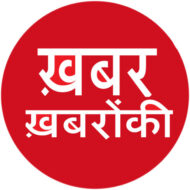
Balancing on the Tightrope: How Inflation Affects India’s Dining Table
Ira Singh
02 Nov’23
India’s Inflation Landscape Amidst Global Turbulence
Inflation has become the stealthy disruptor at our dinner tables, impacting not only what we eat but also how much we pay for it. India, over the past two years, has managed to weather the inflation storm better than its Western counterparts, the US and Europe. However, this relative stability conceals a complex story of economic uncertainty and the delicate balancing act required to ensure there’s enough on your plate without breaking the bank.
A Downward Trajectory:Despite the recent spike in vegetable prices that raised concerns, India’s inflation trend has largely been on a downward trajectory. This positive development has provided some relief to households across the country, particularly when compared to the relentless inflation pressures faced in the West.
Interest Rates and India’s Resilience: One striking feature of India’s approach to managing inflation is the absence of sharp interest rate hikes. In stark contrast to the West, where central banks raised rates to combat rising prices, India opted for a more measured response. This approach aimed to balance the need for economic growth with the imperative to keep inflation in check.
The Multi-Polar World Challenge: However, as we navigate the economic landscape in this multi-polar world, it’s important to recognize that the ground is inherently unstable. High volatility has become the new normal, posing ongoing challenges to both policymakers and the average citizen.
The Impact on Dining Tables:Inflation, while seemingly distant from our daily lives, has a profound impact on what ends up on our plates. Rising prices for essential goods, including food items, can strain household budgets, forcing consumers to make difficult choices. As inflation persists, portions may shrink, quality may decline, and consumers may have to adjust their dietary preferences.
Coping Strategies: Households in India are increasingly adopting various strategies to manage inflation’s impact. These may include seeking out more affordable substitutes, buying in bulk during periods of lower prices, or even considering home gardening to reduce reliance on expensive produce.

The Reserve Bank of India (RBI) has taken a significant step toward enhancing its understanding of economic dynamics by introducing two crucial surveys, the ‘Inflation Expectations Survey of Households’ and the ‘Consumer Confidence Survey.’ These surveys are set to play a pivotal role in shaping the nation’s monetary policy.
The Reserve Bank of India on Wednesday announced the launch of ‘Inflation Expectations Survey of Households’ and ‘Consumer Confidence Survey’ which will provide key inputs for the bi-monthly monetary policy.The next bi-monthly monetary policy is scheduled during December 6-8.
The ‘Inflation Expectations Survey of Households’ captures subjective assessments on price movements and inflation based on their individual consumption baskets, across 19 cities, including Bhopal, Bhubaneswar, Chandigarh, Chennai, Delhi and Thiruvananthapuram.
The survey on inflation seeks qualitative responses from households on price changes in the three months ahead as well as in the one year ahead period and quantitative responses on current, three months ahead and one year ahead inflation rates, according to RBI releases.
The ‘Consumer Confidence Survey’ seeks responses from households, regarding their sentiments on general economic situation, employment scenario, price level, households’ income and spending.It is also conducted in 19 cities, including Ahmedabad, Bengaluru, Bhopal, Bhubaneswar, Chandigarh, Chennai and Delhi.
The results of the surveys provide useful inputs for monetary policy, the RBI said.
India’s relative success in managing inflation compared to the US and Europe offers a degree of reassurance, but it does not eliminate the challenges. The nation’s approach to interest rates and its ability to maintain a downward inflation trajectory have been commendable. However, in a world marked by volatility, the delicate balance between economic growth and price stability remains an ongoing concern. As families in India continue to navigate this complex economic landscape, ensuring there’s enough on their plates at reasonable prices is a daily challenge that requires resilience and adaptability.
